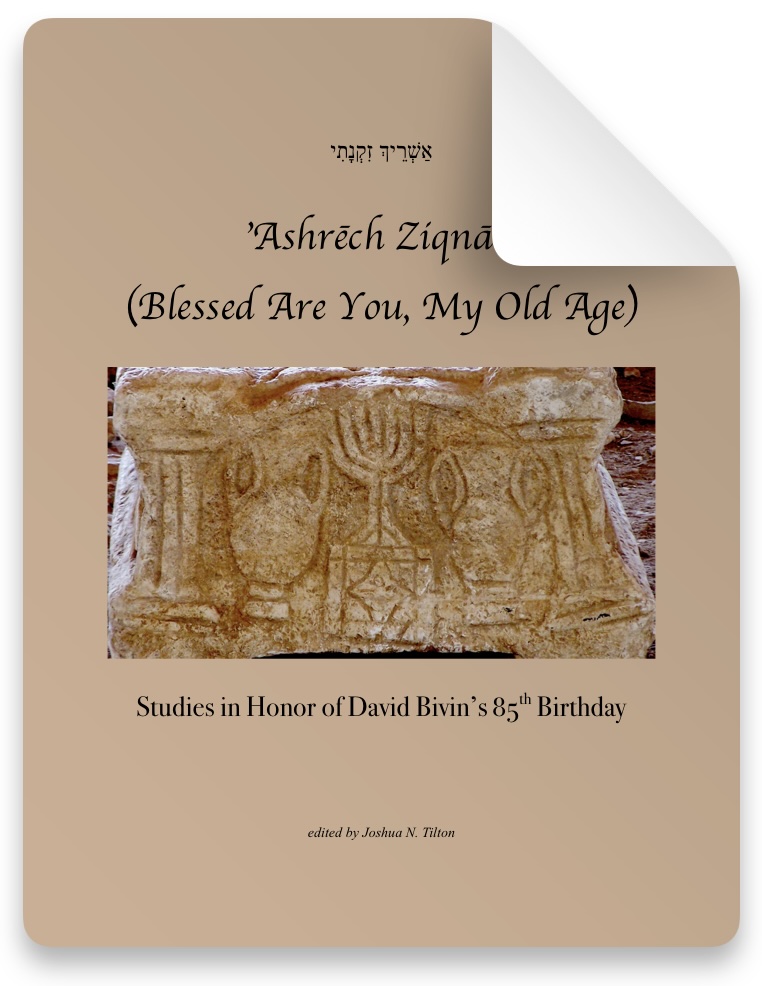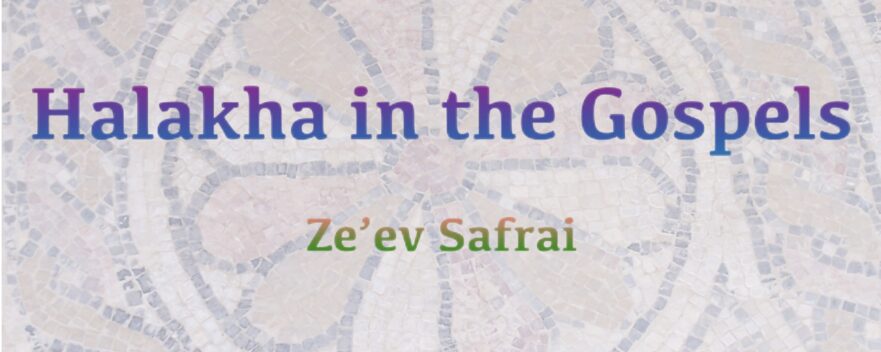How to cite this article: Ze’ev Safrai, “Halakha in the Gospels,” Jerusalem Perspective (2024) [https://www.jerusalemperspective.com/28876/].
This article belongs to the collection Ashrech Ziqnati (Blessed Are You, My Old Age): Studies in Honor of David Bivin’s 85th Birthday.

Updated: 23 April 2025
I met David Bivin as a child when he was a senior student in the bet midrash of my teacher, Prof. David Flusser and my father Shmuel Safrai, may they rest in peace. I grew up into this bet midrash, which was conducted in the university, at home, while we traveled, and when we lay down and rose up. David Bivin stood out both as a researcher and in his welcome activity in the bet midrash of Jerusalem Perspective. When I imagine what the study method of Bet Shammai or Bet Hillel would have been like, had they been active in modern times, I imagine this bet midrash in present-day Jerusalem. The coordinators—the late Prof. Flusser and David Bivin—focused on studying the Jewish background of the New Testament, and the question of halakha in the New Testament was central to their discussion and their work as public intellectuals. That is why I decided to explore this subject for the book honoring David Bivin.
| Table of Contents |
|
1. Outline 2. Introduction 4. Section 2: Literary Contexts 5. Section 3: The Literary Structure of the Halakhic Dialogues 6. Section 4: The Non-legal Character of the Early Halakha 7. Conclusions 8. Appendix 1 9. Appendix 2 |
Outline
This article has two goals,[1] the first of which is to discern the relations between the Synoptic Gospels and the Pharisaic halakha, known to us from rabbinical literature. The second goal is to find out what can be learned from the implied halakha in the Gospels about the ancient rabbinic halakha. The starting point of the discussion is the table found in Appendix 1 of this article. The table lists more than 140 halakhot mentioned or alluded to in the Gospels and Acts, the vast majority of which are from the Synoptic Gospels.
In the introduction, the principles according to which the table was prepared are presented, and cases of doubt are raised. Doubtful cases were not entered into the table, so that the proposed findings should be considered a minimum number of halakhot in the New Testament. However, it is worth noting that in the research, doubts have already been cast on some of the evidence.
In the first section, the general picture is presented, emerging from Appendix 1. Research until now has mainly dealt with individual cases of halakhot, which can be interpreted in different ways. But the general picture points to a great closeness between the halakha in the New Testament and the literature of the sages. The large number of halakhot in the Gospels proves, beyond the doubts that exist today in the research, that Jesus is described as the leader of a group that observed the Pharisaic halakha. The picture emerging from the Gospels points to writers (and readers) who were familiar with the halakhic lifestyle, and for whom halakha was central.
In the second section, a division of the halakhot according to their literary context is presented: 1. Laws that are mentioned by way of a story or description; 2. Laws in which Jesus debated with the “others” (the Pharisees and/or the scribes). Almost all of the laws in the first group are according to the ancient Pharisaic halakha (or are represented within the diversity of the Pharisaic halakha of the Second Temple). After that, the fifteen cases in which there is an open debate between the “others” and Jesus are discussed. In almost all of them, Jesus’ words correspond to the law of the sages or are represented within the diversity that existed in rabbinic literature.
Sometimes the evidence for the early halakha comes from later sources (even from the Middle Ages) that preserved the ancient halakha. The article focuses on the laws themselves, and not on the arguments presented in the Gospels. These arguments require a separate investigation, some of them contradict the thought of the sages. In the third section, the literary structure of the dialogues is examined, and it will be noted that such dialogues are also found in the literature of the Sages.
In the fourth section we will examine the legal nature of the halakhic thought attributed to Jesus. As has already been shown in the research, the halakha attributed to Jesus does not reflect a legal character, in contrast to the halakha of the Sages. However, it turns out that the ancient halakha of the Sages was neither legal nor coherent in nature. This argument was raised in a previous study without any connection to the study of the halakha in the Gospels.
We will conclude that Jesus’ halakha is an integral part of early halakha from the first century in all its aspects. Thus implausible that Jesus lodged a principled polemic against central tenets of halakha.
Paid Content
Premium Members and Friends of JP must be logged in to access this content: Login
If you do not have a paid subscription, please consider registering as a Premium Member starting at $10/month (paid monthly) or only $5/month (paid annually): Register
One Time Purchase Rather Than Membership
Rather than purchasing a membership subscription, you may purchase access to this single page for $1.99 USD. To purchase access we strongly encourage users to first register for a free account with JP (Register), which will make the process of accessing your purchase much simpler. Once you have registered you may login and purchase access to this page at this link:
- [1] I am very grateful to my friend, Prof. Peter Thomson, who read the manuscript very carefully and corrected many errors. His judgment was of importance in the writing of the article. I am also grateful to my editor, Joshua N. Tilton, for his great help in editing and improving the article. ↩































































































